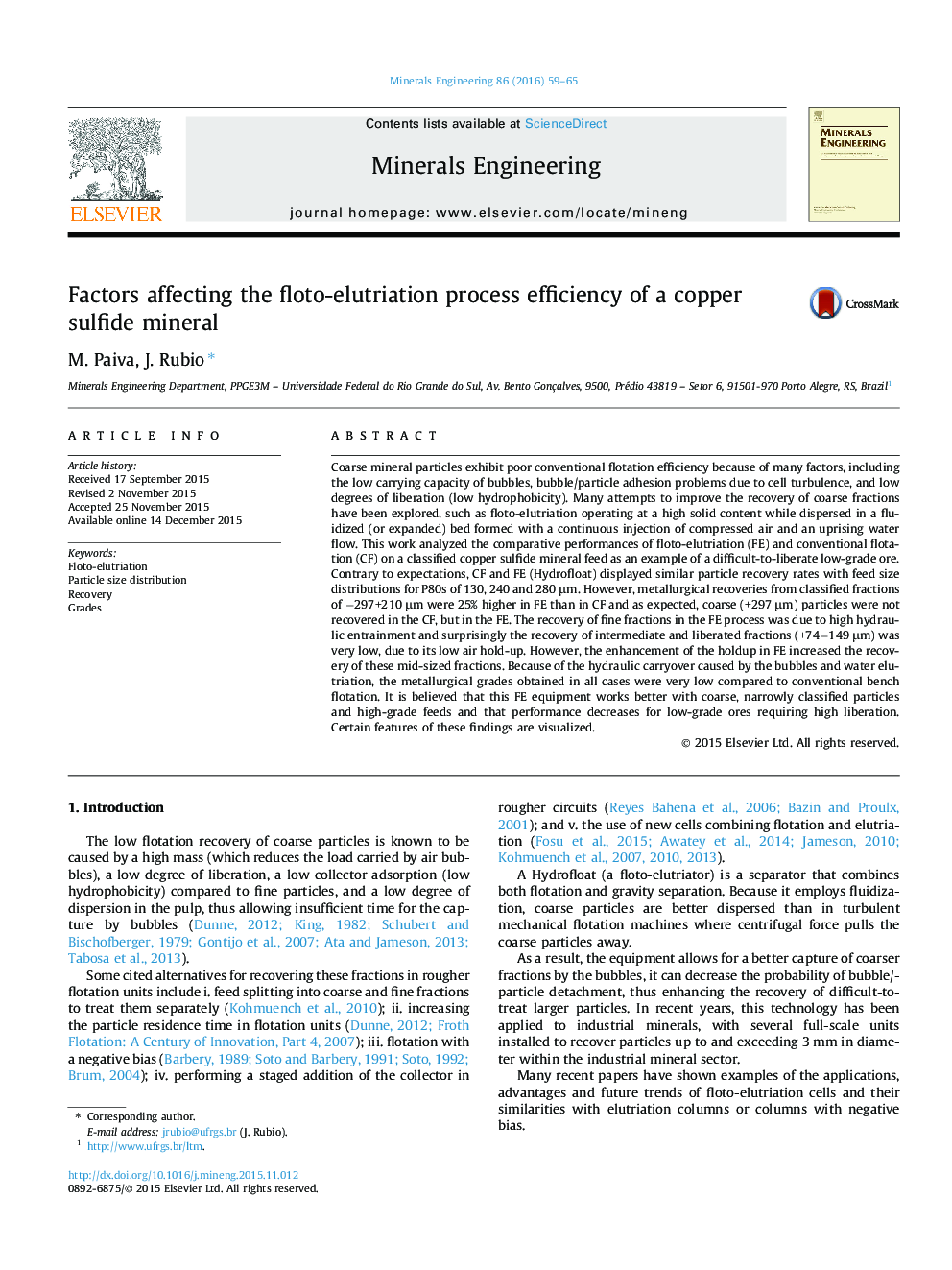| کد مقاله | کد نشریه | سال انتشار | مقاله انگلیسی | نسخه تمام متن |
|---|---|---|---|---|
| 232810 | 465307 | 2016 | 7 صفحه PDF | دانلود رایگان |
• FE performance depended on copper feed grade, aeration, particles size and liberation.
• Recoveries in the FE were similar to that in CF for all P80 fractions but with low concentrate grades.
• Fine particles (<74 μm) recoveries were high due to the high entrainment in the FE.
• Mid-sized particles (74–149 μm), although liberated, were only collected by enhancing the air holdup in the FE.
• Copper sulfide mineral feeds to the FE should be deslimed to assure a better recovery of the coarser particles.
Coarse mineral particles exhibit poor conventional flotation efficiency because of many factors, including the low carrying capacity of bubbles, bubble/particle adhesion problems due to cell turbulence, and low degrees of liberation (low hydrophobicity). Many attempts to improve the recovery of coarse fractions have been explored, such as floto-elutriation operating at a high solid content while dispersed in a fluidized (or expanded) bed formed with a continuous injection of compressed air and an uprising water flow. This work analyzed the comparative performances of floto-elutriation (FE) and conventional flotation (CF) on a classified copper sulfide mineral feed as an example of a difficult-to-liberate low-grade ore. Contrary to expectations, CF and FE (Hydrofloat) displayed similar particle recovery rates with feed size distributions for P80s of 130, 240 and 280 μm. However, metallurgical recoveries from classified fractions of −297+210 μm were 25% higher in FE than in CF and as expected, coarse (+297 μm) particles were not recovered in the CF, but in the FE. The recovery of fine fractions in the FE process was due to high hydraulic entrainment and surprisingly the recovery of intermediate and liberated fractions (+74−149 μm) was very low, due to its low air hold-up. However, the enhancement of the holdup in FE increased the recovery of these mid-sized fractions. Because of the hydraulic carryover caused by the bubbles and water elutriation, the metallurgical grades obtained in all cases were very low compared to conventional bench flotation. It is believed that this FE equipment works better with coarse, narrowly classified particles and high-grade feeds and that performance decreases for low-grade ores requiring high liberation. Certain features of these findings are visualized.
Figure optionsDownload as PowerPoint slide
Journal: Minerals Engineering - Volume 86, February 2016, Pages 59–65
